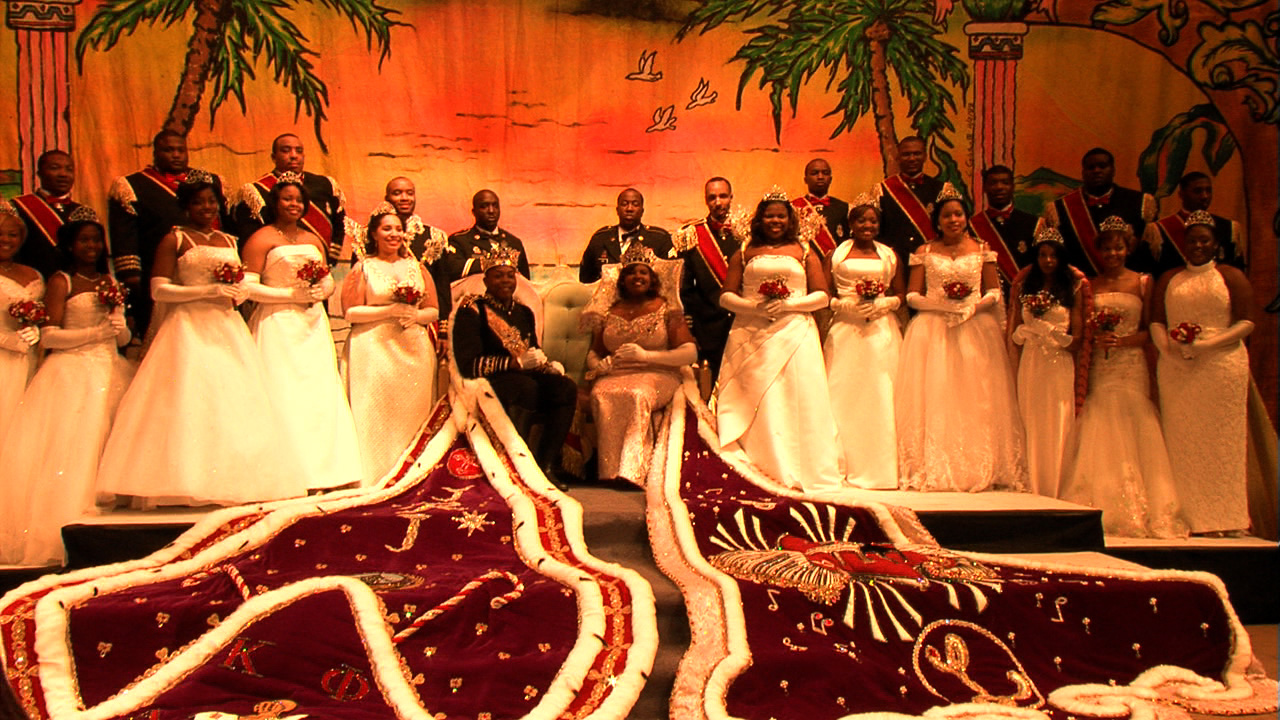|
Reviews of Recent Independent, Foreign, & Documentary Films in Theaters and DVD/Home Video
THE ORDER OF MYTHS
Where director Margaret Brown’s previous documentary Be Here to Love Me was a conventional posthumous biographical appreciation of singer/songwriter Townes Van Zandt, she makes a revealing anthropological portrait of her home town. She profiles Mobile today as a progressive Southern city with a black mayor and city council members, with an African-American Heritage Trail coursing through its historic Africatown. Its citizens are proud of its traditions, including its segregated Mardi Gras. Through weeks of elaborate rituals and costume preparations, Brown goes back and forth between the black and white mystic societies whose members organize the separate celebrations. She has an insider’s access from the private announcement of each community’s king and queen and their courts to the public parades, with her grandfather explaining the centuries-old symbols of the white Mobile Carnival Association. The activities of the black Mobile Area Mardi Gras Association, which first paraded in 1939 as the Colored Carnival Association, play out within the Black History Month curriculum at the elementary school where the year’s black queen and king, Stefannie Lucas and Joseph Roberson, teach. As she follows the “royalty” around to their complicated fittings, rehearsals, and balls, Brown goes beyond documenting a quaint folkloric relic. She focuses on how the formal customs are being continued by the younger generation, seen nervously stepping up to their roles, either as an obligation of family ties for the whites (the queen Helen Meaher‘s grandmother had the same honor in 1935), or for community standing by the African-American participants. The film serves as a surprising reminder that in an age of globalization, transiency, and mass media, there are places in America where young people grow up surrounded by tradition, both positive and negative, and stay to carry it on to the immense pride of their families and neighbors. But Southern traditions are inevitably fraught by the past—the black queen learns that her great-grandfather was on the Clotilda in 1859, the last slave ship from Africa into the United States, commissioned by the white queen’s ancestor in defiance of Congress’s ban on importing slaves. Beyond a commemorative ceremony led by a Jeremiah Wright-like speaker at Mobile Bay where the slaves landed, Brown doesn’t dwell on the history, letting the prominence and wealth of the Meaher family today speak volumes. (Katrina Browne’s recent documentary Traces of The Trade: A Story from the Deep North provides history and a personal perspective on how descendants of another prominent trader are coming to terms with that legacy.) Interviewees are very much aware of the camera and struggle mightily to carefully word their responses for political correctness, by Mobile standards. (Brown’s grandfather finally tells her to turn off the camera so he can tell her the whole story.) The camera’s presence may have also influenced the young “monarchs of merriment” to make incremental, but in the rigid etiquette of the events, significant changes in tradition. While Brown declined to follow her mother into the MCA court, her stand-in seems to be Brittain Youngblood, a Brown University student who is reluctantly drawn in and endeavors to keep her liberal balance through the regimented expectations of the parties and parades. She embraces her black housekeeper, catches up with African-American kitchen employees during a luncheon, and flatters her black dress designer. When the participants have joined Brown at film festival Q & As, they’ve been taken aback by the reactions of outsiders, especially that they didn’t know what moon pies were—they’re graham cracker and marshmallow treats. Brown also finds young men trying to introduce other changes into the otherwise closed festivities by establishing new mythic orders: an integrated one (which so far has only one white member) and a working-class version. (With their good ol’ boy bravura, they generously bring the Mardi Gras spirit to nursing homes, hospitals, and to other neglected citizens). Brown has said she also filmed a gay group, but decided at the last moment not to include them. Brown
takes part in a recent and fascinating trend of Southern
filmmakers who are mining their personal pasts for insightful
perspectives, such as Ross McElwee on his tobacco growing family
in Bright Leaves and Godfrey Cheshire
on his family’s plantation in Moving
Midway, to be released later
this year.
Royce Osborn’s documentary
All on a Mardi Gras Day provides the history of Mardi Gras in
the U.S. and the impact of the segregated and integrated celebrations in
his native New Orleans. Somberly hanging over both the white and the
black celebrations, though, is
David Redmon’s Mardi Gras:
Made In China, about how all those throwaway party beads are made by
overworked, underpaid children.
Nora Lee Mandel
|

